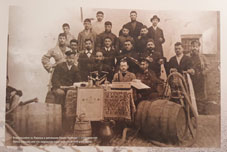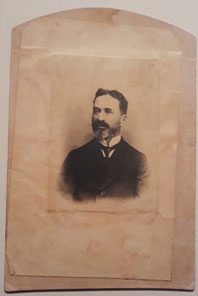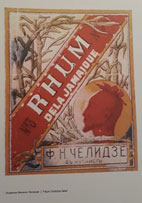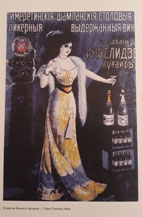
Katsia Adanaia and Filipe Chelidze - Country of Liquid Sun
Tuesday, May 5
Amongst famous Georgian businessmen of the nineteenth century, Katsia Adanaia is notable for having owned the enterprise for producing alcohol beverages in the city of Kutaisi, in Western Georgia. The products which were made in his factory-liqueurs of lemon, currants, mint, rose, tarragon and assorted vodkas-were served not only in Kutaisi but also at the restaurants, hotels and taverns and were sold in the shops of large industrial cities and ports in Georgia and with great popularity amongst consumers.
At that time, restaurant patrons in Kutaisi and other large cities-mostly foreign diplomats, representatives of commercial missions, members of the aristocracy, artists, European guests and otherwise inquisitive travelers- were interested in Georgian meals and beverages and Kutaisi was always distinguished by its hospitality. Located close to the cities of Batumi and Poti, this also meant that a great number of patrons and guests visited the restaurants and hotels of Kutaisi with each of these locales always having been popular meeting places for businessmen and civil servants. As a result of this also foreign popularity of his products, the labels of the outputs manufactured by Katsia Adanaia, similar to the products of many other companies at this time, were mostly written in French and Russian. Adanaia's registered trademark was the deer and his initials in Cyrillic script, К.Г.А.
The Kutaisi Governorate was established in 1846. Accordingly, Kutaisi became the administrative and economic centre of the region with a concentration of military and civil-administrative institutions. A city Governance Reform implemented in 1875 facilitated the economic growth of the city and its transformation into a bourgeois system and society.
Records of Kutaisi Governors contain dry and stenciled information on the economic processes taking place in the region with only insignificant details on the life of the city. Materials on the initiation and development of Kutaisi industry are especially scarce.
Imereti, similar to the rest of Georgia, is a region of viticulture and wine making. Naturally, the economic reforms in Imereti were followed by the development of the wine industry. In this field, George Bolkvadze was apparently the innovator. He was the first to establish a liquor-cognac production in the 1860s that later became famous throughout the country.
The quality of liquor and cognac production technology at the Bolkvadze Company seems to have been outstanding since a famous wine maker, Filipe Chelidze, spent 12 years at the factory and became proficient in the production of liquor-vodka. Chelidze, however, was still not satisfied by his success decided to master the production of champagne wine. For this purpose, he became acquainted with the French Champagne producer, Victor Tiebo, who was working at the Oldenburg-owned wine factory in Kutaisi (located on Balakhvani Street). Chelidze spent another couple of years in this factory as a probationer. Later, he purchased equipment from Tiebo and a plot of land on Mikheili Street. In 1895, he constructed a special factory for the production of liquor and table wine, opened a shop nearby the factory and started exhibiting his production for sale.
Chelidze's company, with state-of-art equipment, gained tremendous success. The factory, employing 15 staff members, was annually producing up to 15,000 cask of champagne wine, 100,000 cask barrels of table wine and 15,000 cask barrels of liquor. The Caucasus countries were the primary customers of the factory. Special productions were also sent to Russia, mostly to Siberia and the Far Eastern Manchuria regions.
Chelidze's company became a recipient of 11 international exhibition rewards and a number of medals as the testimony of its success and recognition.










